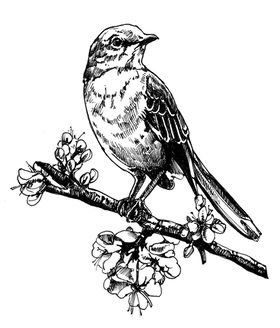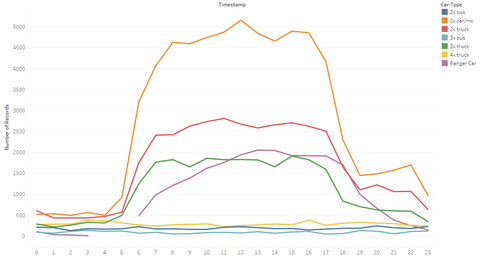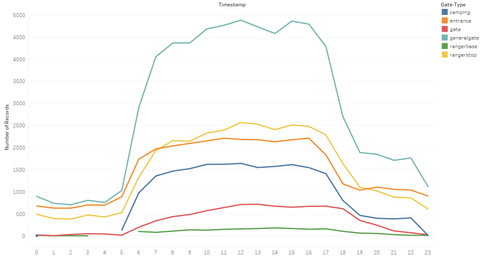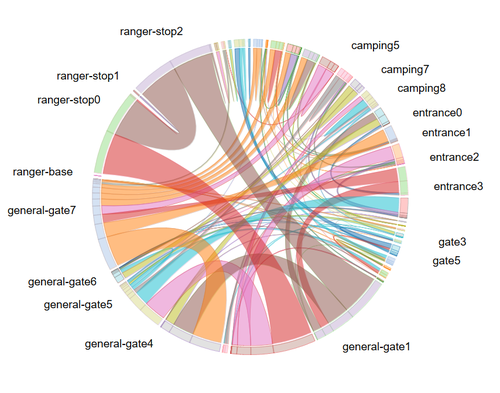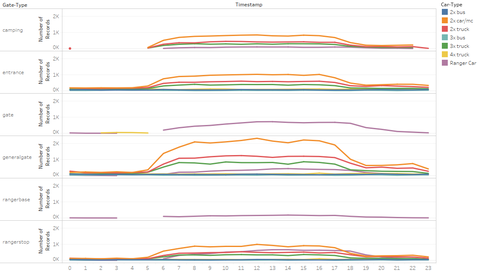ISSS608 2016-17 T3 Assign CHIAM ZHAN PENG
Contents
- 1 VAST Challenge 2017: Mini-Challenge 1
- 2 Data Preparation & Data Visualization
- 3 Patterns of Life Analysis
- 3.1 Usual Daily Patterns
- 3.1.1 1. Movement hours and cars in the park: 8a.m to 5p.m peak hour
- 3.1.2 2. Traffic behavior: General-gate is most accessed and silent hours of campsite and ranger-base
- 3.1.3 3. 2 & 3 axles buses & 4x truck bypass through the park and do not camp
- 3.1.4 4. Time taken between public checkpoints: Under 24 mins
- 3.2 Usual Multiple Days Patterns
- 3.3 Unusual Patterns
- 3.4 Top 3 Possible Causes
- 3.1 Usual Daily Patterns
VAST Challenge 2017: Mini-Challenge 1
Mistford is a mid-size city is located to the southwest of a large nature preserve. It has been discovered that the number of nesting pairs of the Rose-Crested Blue Pipit, a popular local bird due to its attractive plumage and pleasant songs, is decreasing! Provided several datasets, it is required to investigate the reason for the decrease of Rose-Crested Blue Pipit. In Mini-Challenge 1, traffic movement dataset is given to analyze patterns of life of vehicles through out the reserve, and detect unusual patterns that are potentially harmful to the birds. Questions raised are:
- Describe up to six daily patterns of life by vehicles traveling through and within the park.
- Describe up to six patterns of life that occur over multiple days (including across the entire data set) by vehicles traveling through and within the park.
- Describe up to six unusual patterns (either single day or multiple days) and highlight why you find them unusual.
- What are the top 3 patterns you discovered that you suspect could be most impactful to bird life in the nature preserve?
This webpage will guide you through my investigations and help to save Rose-Crested Blue Pipit!
Data Description
Entry gates are positioned at the Preserve entrances. Each vehicle receives an entry ticket at the gate and is assigned a vehicle class; the entry is recorded. The entry ticket contains an RF-tag that enables the Preserve sensors to pick up the passage of a vehicle through the Preserve. Each vehicle surrenders their entry ticket when exiting the Preserve and the exit is recorded. A .csv file containing data recorded from sensors around the Boonsong Lekagul Nature Preserve. A map containing the locations of roadways and sensors throughout the Preserve is also provided.
Data Preparation & Data Visualization
Dataset Overview
Movement & Sequence
Point Coordinates & Path
Patterns of Life Analysis
Usual Daily Patterns
1. Movement hours and cars in the park: 8a.m to 5p.m peak hour
- People started to arrive in the park from 5 am onwards until 7 pm; with peak hour roughly between 8a.m to 5p.m.
- Even at quiet hours between 7 p.m. to 5 a.m., there are all types of vehicles that travels within all the gate types in the park
- Most common vehicle types are 2 axle car/motorcycle & 2 axle truck
2. Traffic behavior: General-gate is most accessed and silent hours of campsite and ranger-base
- General-gate are the most accessed checkpoints in the park
- Campsite: There is no movement at the campsite between 12a.m to 5a.m.
- Ranger-base: There is no movement of ranger-car and at the ranger-base between 3a.m. to 6.a.m.
3. 2 & 3 axles buses & 4x truck bypass through the park and do not camp
- 2 & 3 axles buses move throughout the park at all hours. It passes through:
- all entrances 0,1,2,3,4
- some general gates 1,2,4,5,7
- some ranger stops 0, 2, which is on the main route
- 4 axles truck move throughout the park at all hours. It passes the same checkpoints as 2 & axles buses and in additional:
- gate 3, 5 & 6
- ranger stops 3 & 6
Hypothesis: xxxxx
4. Time taken between public checkpoints: Under 24 mins
- The average time taken to travel between checkpoints for public checkpoints (excluding ranger-stop andis under 0.4hrs or 24 mins.
- Rangers typically spend less than 1hr at all rangerstops except for ranger-stop 1 which has exceptions up till almost 6 hours.
